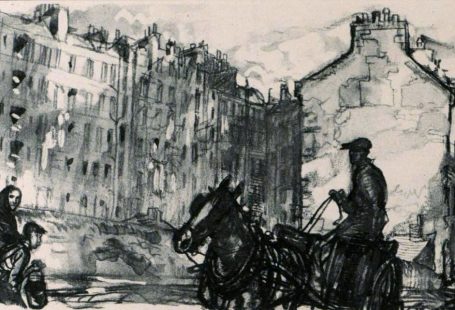This week at The Archive we have added 73,896 brand new pages, as we count down to a very special milestone. Right now, we have just over 49,800,000 pages in our collection, and we are very excited to be counting down to the landmark figure of 50 million pages. So watch this space for more updates, that will bring us to a wonderful achievement in the very near future.
Meanwhile this week we have updated five of our existing titles, with extensive updates to one of our international titles, the Civil & Military Gazette (Lahore), and to four of our English regional titles. So read on to discover more about our updated titles of the week, and to discover more about an important moment in cricket history – the first Test match to be played by India.
Register now and explore the Archive
This week we have added over 67,000 pages to the Civil & Military Gazette (Lahore), with all of the new pages hailing from the twentieth century. However, the Civil & Military Gazette traces its origins way back into the nineteenth century, with the founding of The Mofussilite newspaper in 1845 by Australian author and journalist John Lang (1816-1864) in Calcutta (Kolkata).

After being based across numerous locations, from Meerut to Agra, The Mofussilite was merged with the Civil & Military Gazette in 1877, the latter newspaper having been founded in 1872, and was then published in Lahore. You can read more about the early history of The Mofussilite here.
Meanwhile, the Civil & Military Gazette became a daily newspaper, being published concurrently in Lahore, Simla and Karachi. It ran until 1963, its last editor being Abdul Hamid Sheikh. Working for the newspaper in its last year of publication was veteran Pakistani journalist Mahbub Jamal Zahedi, who for fifty years was editor of Dubai newspaper the Khaleej Times, and was also the news editor of the Karachi based newspaper Dawn.

The new pages we have added to the Civil & Military Gazette this week span the years between 1929 and 1962, chronicling India’s fight for independence and the Partition of India in 1947, when British India was divided into the two independent dominions of India and Pakistan. Thus the Civil & Military Gazette represents an unparalleled insight into this momentous occasion in both Indian and Pakistani history, from 1947 onwards reporting on the news from newly independent Pakistan.
Meanwhile, we have added new pages to historic Liverpudlian newspaper the Liverpool Daily Post, which was established in 1855 by Michael James Whitty (1795-1873). Irish-born Whitty was a former Chief Constable of Liverpool, and he had campaigned for the abolition of the Stamp Act, which imposed a tax on newspapers. When this Act was finally rescinded in 1855, Whitty established the Daily Post at the cost of just 1p, undercutting rival Liverpool newspaper the Liverpool Mercury, which at that time was the town’s best-selling publication (Liverpool would become a city in 1880).

And the Daily Post was a runaway success, becoming the ‘principal leader of public opinion in Liverpool.’ By the 1880s it was known as the Liverpool Daily Post, and it circulated ‘in Liverpool, Lancashire, Cheshire, Staffordshire, Derbyshire, Wales and trading and commercial districts.’ Its reports were ‘ample and complete,’ and by 1904 it had merged with its rival the Liverpool Mercury, retaining its own title of the Liverpool Daily Post.
By the twenty-first century the Liverpool Daily Post was the last daily paper to be published in Liverpool, and on 31 January 2009 its last Saturday edition appeared. On 13 January 2012 the newspaper became weekly, appearing every Thursday, whilst on 19 December 2013 the last ever edition of the Liverpool Daily Post was published, marking the end of a historic and important newspaper.

We have also added more pages to the historic Dover Express this week. This Kent-based newspaper was first published in 1858 and was Liberal in its politics. Like the Liverpool Daily Post, it cost only one pence. Meanwhile it circulated ‘in Dover, the Cinque Ports, and East Kent generally,’ the Cinque Ports being a historic group of coastal towns situated in Kent and Sussex.
Our other updates this week hail from the 1980s. We have augmented both the Harlow Star, which covers the headlines from the west of Essex, and the Macclesfield Express, which covers the news from east Cheshire.
1932 – India’s First Test Match
In the summer of 1932 a team representing All India travelled to England to play in India’s first ever Test match, which was hosted at Lord’s. New pages added to the Civil & Military Gazette this week detail the preparations and excitement surrounding the Test match, as well as reporting on the game and its outcome, which although was not favourable to the visitors, it represented an important moment in cricket history.
As early as January 1932 the Civil & Military Gazette is reporting on the preparations for the All India tour of England. The newspaper’s excitement, and the excitement that must have been felt in India at the time, is palpable:
The first of the trial matches arranged with a view to the selection of an Indian cricket team to tour England this summer started in Patiala on Thursday. The finest talent in the country has been assembled and for the first match the captains are the Maharaj Jumar of Vizianagram and Kumar Shri Ghanshyamsinhji.

By April 1932, the All India team had been selected and was ready to make the long journey to England, under the tour captaincy of the Maharaja of Porbandar, batsman C.K. Nayudu taking on the captain’s role for the Test match. On 4 April 1932 the Civil & Military Gazette reported on the Indian team’s departure, as they set sail on the SS Strathnaver. The newspaper detailed how ‘the pier and the steamer were thronged with well wishers, Indian and European, and the team was given a very good ‘send-off.’’
Meanwhile, tour captain the Maharaja of Porbandar gave the following ‘farewell message:’
We are very optimistic. Indeed, we are looking forward most eagerly to our tour in England with only one wish; namely, that the weather will be favourable. So au revoir, India!
After arriving in England and playing matches across the country, the All India team on 25 June 1932 faced the biggest challenge of the tour – taking on England at a Test match at Lord’s. Although the Indian team dismissed England’s big hitters – Percy Holmes, Herbert Sutcliffe, Frank Woolley and Wally Hammond – cheaply in both innings, their batsmen did not capitalise on the bowlers’ success, meaning that England won by 158 runs. But despite this defeat, the Civil & Military Gazette contained glowing reports on the match, and what it meant for the future of Test match cricket in India.

The Civil & Military Gazette commented on the ‘exhilarating kind’ of cricket exhibited by the Test match, and how the resulting feelings were those of ‘pride and pleasure at the excellent showing made by the Indian team.’ The newspaper went on to observe:
It is admitted that the Indian bowlers did much better than the batsmen and indeed, the feat of dismissing the record-breakers, Sutcliffe and Holmes, for small scores in both innings was a veritable triumph for the Indian bowlers. The Indian fielding was scarcely less notable and their team-work has been described as a revelation.

After the match, tour captain the Maharaja of Porbandar was interviewed, and he stated:
I think it has been a most enjoyable match and one in which it must have been a pleasure to have taken part. I congratulate England on their victory and at the same time I am very pleased at the fight my team made. We were beaten by a better side but everyone I think will acknowledge that the Indians rendered a very good account of themselves, not only in bowling, but especially in fielding.
He went on to say:
We are all particularly gratified at the splendid reception given to us by the fine crowds, and their appreciation of our efforts in our first Test. Defeat will not do us harm, but on the contrary will stimulate interest in our cricket during the rest of the tour… I think we have shown ourselves justified in being accorded a ‘Test’ match.

Meanwhile England captain Douglas Jardine, who scored half centuries in both innings, said that it was a ‘thoroughly enjoyable match.’ Indeed, the success of Test led to ‘talks in English cricket circles’ about arranging further Tests that summer, but sadly this did not come to fruition.
However, India’s status as a Test match side had been solidified, and the single Test in 1932 was just the beginning of the country’s illustrious international cricketing achievements. And when the pioneering team arrived back in India, at Bombay (Mumbai), they received an ‘enthuastic welcome,’ as reported the Civil & Military Gazette on 5 October 1932.
Greeted by Mr V.N. Chandavarkar, the Mayor of Bombay, and members of the Bombay Corporation, as well as an ‘army of photographers,’ the All India team was accorded a civic welcome, and a dinner where 250 people would be in attendance.

Star batsmen and captain C.K. Nayudu was interviewed by the press upon his arrival, stating how India had ‘sufficient cricket talents,’ and how her players only needed a ‘bit of polishing.’ The Civil & Military Gazette reported how Nayudu declared that the team:
...had enjoyed every minute of the tour and that they had not known a minute’s dullness while they were in England. The tour, he maintained, would prove greatly beneficial to Indian cricket. The English weather, he said, was simply charming and delightful and they had never felt tired although they had to play more matches than other visiting teams. He admired greatly the fine pitches on which they had played, the delightful audiences and the wonderful and cordial receptions which they had received.

Despite defeat in the Test, the tour had been a success, and represented a landmark not only in Indian cricket, but in world cricket too.
Updated Titles
This week we have updated five of our existing titles.
You can learn more about each of the titles we add to every week by clicking on their names. On each paper’s title page, you can read a FREE sample issue, learn more about our current holdings, and our plans for digitisation.
TITLE |
DATE RANGE |
| Civil & Military Gazette (Lahore) | 1929, 1931-1936, 1938, 1948-1950, 1954, 1958, 1960-1962 |
| Dover Express | 1988 |
| Harlow Star | 1986 |
| Liverpool Daily Post | 1874 |
| Macclesfield Express | 1991 |
You can keep up to date with all the latest additions by visiting the recently added page. You can even look ahead to see what we’re going to add tomorrow.






